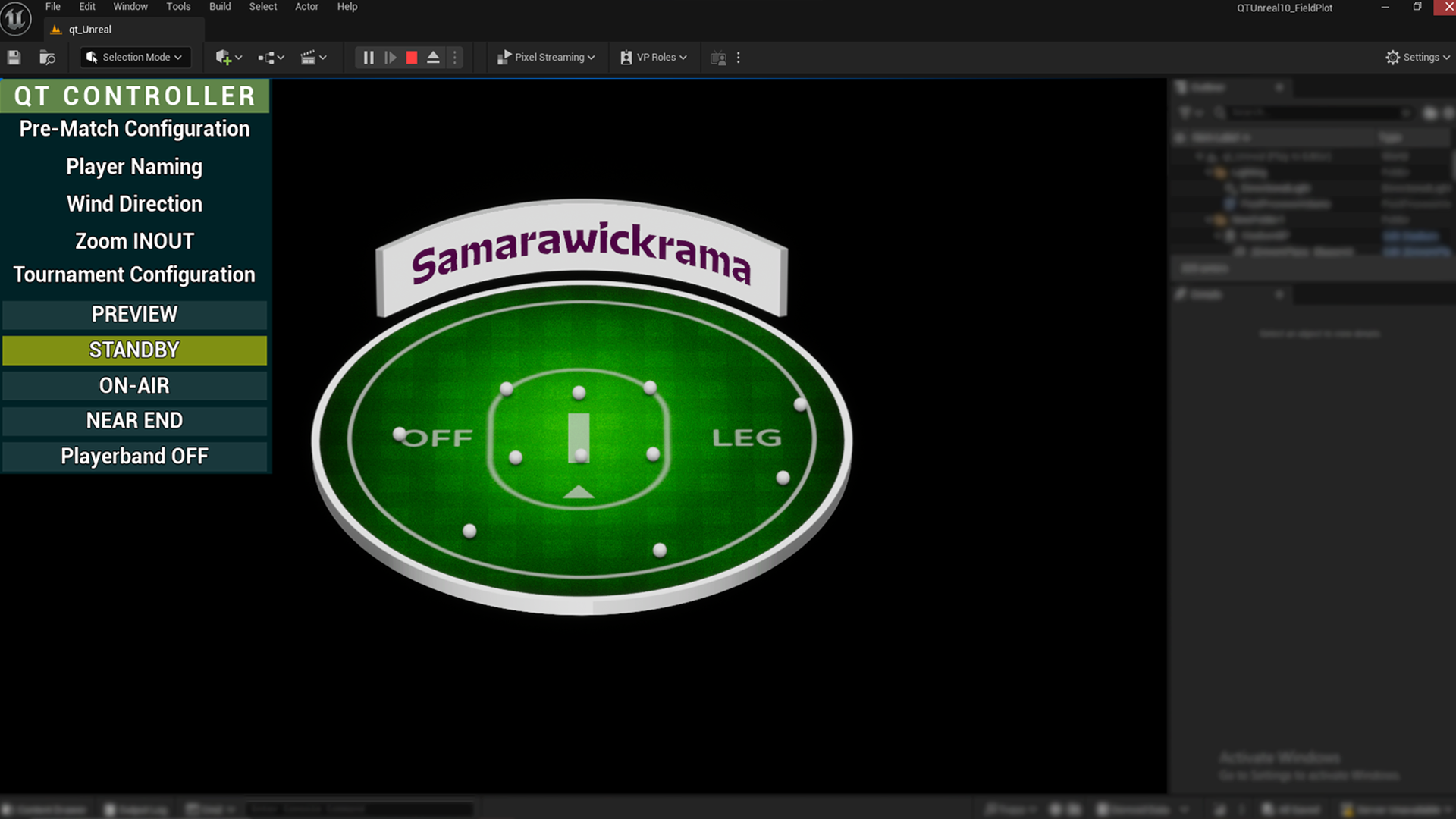Introduction
Unreal Engine 5.7 Preview arrives with significant upgrades that accelerate iteration and enhance reliability, two key factors for live broadcasts at 50/60 fps. For AR, virtual sets, and real-time data visualisations, 5.7 solidifies UE’s role as a core renderer in mission-critical pipelines, bringing significant gains in lighting, materials, foliage, and procedural tooling. It's getting closer to a non-coding interface, where a game developer doesn't need to know coding and with the latest 5.7 tools, the developer could go as much as he/she want.
Unreal 5.7: What’s New

Nanite Foliage & Assemblies (Experimental)
Rendering dense, high-detail foliage at 60 fps is now achievable on current-gen hardware. Nanite Assemblies streamline asset variation management, reducing memory and rendering costs, while Nanite Skinning and Nanite Voxel maintain fine material detail and motion dynamics, even under extreme camera proximity.
MegaLights (Beta)
Lighting gets an upgrade with support for directional lights, Niagara particle lights, translucency lighting, and hair grooms.
Substrate Materials (Production-Ready)
Substrate replaces traditional shading models with a modular, flexible material system. Artists can now combine multiple layers, metal, cloth, skin, and clear coat with precise physical accuracy.
MetaHuman & Rigging Enhancements
MetaHuman Creator is now available on Linux and macOS, with better pose-agnostic conformance and UV-space vertex control. Unreal 5.7 also introduces Selection Sets for quicker rig access. An update to the Skeletal Editor tools now offers the ability to create and edit morph shapes, bones, and skin weights seamlessly.
Make sure to also stay tuned for the new Quixel Megaplants assets on Fab, coming with the full 5.7 release to start your workflows!
To understand Unreal 5.7 preview in detail, click here: Source
The Engine Behind Quidich’s Storytelling

At Quidich Innovation Labs, Unreal Engine has evolved from a rendering tool into the core of our real-time storytelling ecosystem. Our workflow operates under the same pressures as a live broadcast: no dropped frames, no latency, and no room for error.
Unreal’s modular framework, spanning Niagara, LiveLink, and nDisplay, enables us to merge graphics, analytics, and camera tracking into one cohesive system. Our toolchain integrates live tracking feeds and AJA I/O for genlocked, low-latency 4K output, ensuring real-time synchronisation between on-field events and on-screen graphics.
With Unreal 5.7, this workflow becomes even smoother. Lumen’s refined lighting dynamically adapts to shifting stadium conditions, Nanite’s optimised geometry handling keeps crowd and environment details razor-sharp, and Blueprint iteration is faster than ever — empowering our teams to prototype, test, and deploy new visual ideas without breaking the flow of live production.
This combination of technical flexibility and real-time power is what drives our flagship products like HyperView and Quidich Tracker (QT).
HyperView, a visualisation system, was built entirely on Unreal Engine, allowing us to create fully virtualised stadium environments with real-time data integration. From fielder zones to ball trajectories, every visual is rendered with dynamic lighting, motion, and depth that react instantly to gameplay.
Quidich Tracker (QT) began its journey using Vizrt’s Extended Reality tools, enabling early live player tracking and visual overlays. But as our storytelling ambitions grew, so did the need for a platform capable of delivering cinematic quality and data-driven performance simultaneously.
Today, the Unreal development team is testing the latest Unreal versions (5.6 and 5.7) to increase QT’s production capabilities, aiming to enhance data-driven storytelling across 2D and 3D, transforming live match data into visually rich, broadcast-ready experiences.
At its core, our vision is simple: digitally replicating everything as realistically as possible, in real time. Unreal allows us to unify player, ball, and pose tracking — the three foundational layers of sports storytelling — into a single visual language. It’s this integration that lets us move beyond static graphics, creating a dynamic, data-led narrative that audiences can see and feel as the action unfolds.
Why This Matters For Broadcasters
Sports broadcasting runs on one principle: visual intelligence at high speed. Every AR element, trajectory trail, and data overlay must not only look visually perfect, it must render instantly, without fail.
Unreal’s evolution as a real-time engine bridges that delicate balance between creative freedom and broadcast reliability. The 5.7 update enhances:
- GPU stability, even under continuous AJA capture
- Visual fidelity, via Lumen and Substrate materials
- Performance scalability, powered by Nanite foliage and assemblies
Unreal Engine 5.7 Preview isn’t just another technical update; it’s a turning point for real-time broadcast production. For Quidich, it’s about pushing the boundaries of how sports are seen, understood, and experienced.


.png)













